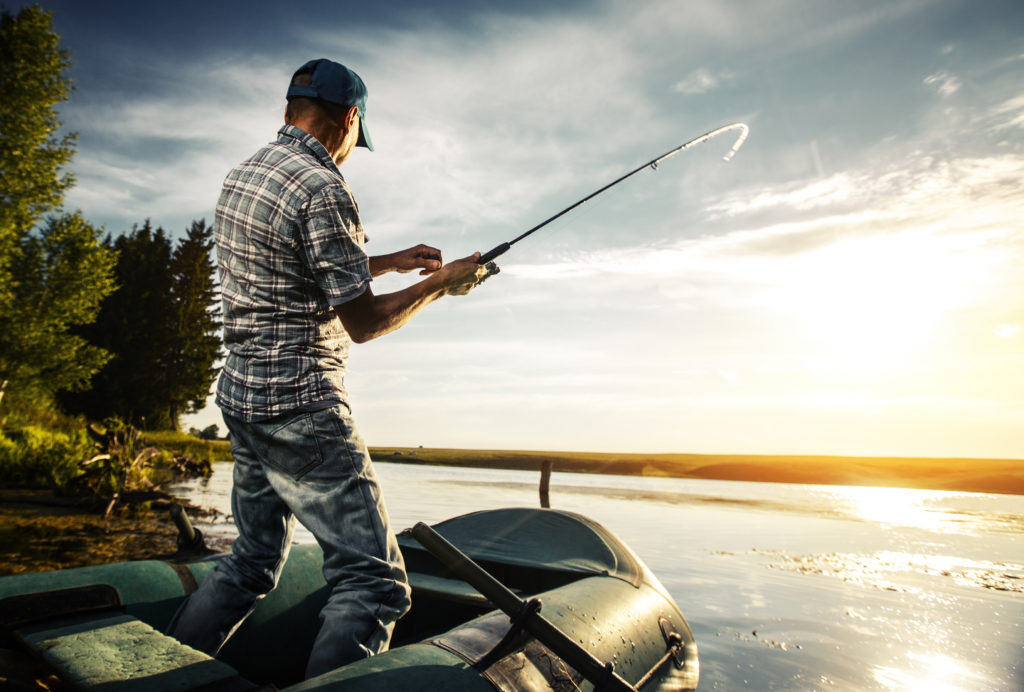Prior Planning Precedes Proper Performance

By Dennis Doyle
Planning for a day of angling is a more pleasant task these days thanks to better technology and tools. It also helps that weather forecasting has become reliably more accurate. Before heading out, be sure to do some quick checks on what awaits you on the water.
The very first data to be reviewed is the National Weather Service’s Marine Forecast. This will detail weather warnings, winds and waves—all items critical to your trip. The next vital piece of information, of course, is what’s biting and where. The best source is undoubtedly a friend or acquaintance who has been fishing in recent days—even skunk stories can give you information on where or what not to do.
Fishing reports via local sports stores are timely and reliable as to the catch (but check dates) but locations are almost always generalized and for good reason. A hotspot can quickly be soured with too much attention, so look at these particular tips generically rather than specifically. If a certain river mouth is indicated as a “hotspot”, take that as a hint that there are probably more nearby rivers currently active. Be prepared to search a bit.
Use these reports also for tactical information on what is seducing the better fish—jigging, plug casting, trolling—and what type of baits are working best—live lining, bait, chum, soft jigs, spoons, topwater plugs, crankbaits, swim baits, etc. This is usually reliable information as the stores commonly can supply the items you lack. Call and ask when in doubt and remember the clerk’s name—a reliable source is beyond value.
Once you’ve decided which techniques to emulate the next step is to review the tides. Tide table information (saltwatertides.com) is probably one of the more critical keys to success (find tide charts below and every week here in CBM Bay Weekly). As reported in Bay Bulletin last month, an awareness campaign has begun at some area docks with QR codes that will send you to tidesandcurrents.noaa.gov.
If you’re going to fish shallow water (less than 6 feet), you’ll want higher tide conditions and these can dictate which location you will fish and in what order. Visiting the shorelines in the early hour or late hours at the beginning or end of your trip is when fish are much more likely to cruise the skinny waters.
Overcast days are also ideal times to target shorelines and thin water. Most Bay gamefish are light-sensitive, so when it gets brighter they go deeper.
Moon phase will always play some role in the bite; tides are higher and currents stronger during the full and new moons. Tide phase won’t be as important when targeting the lumps in deeper waters but the tidal currents will be stronger which can be a good thing. Fish don’t usually feed well in still water. And remember, when referring to the tables, that tidal current lags behind the predicted high and low times. Because of the water mass involved, incoming tides will continue to flow in for about two hours after the high tide mark and continue to go out for two hours after the noted low.
Wind forecasting (NOAA Tides and Currents) especially has become far more accurate in recent years and because of this it is more critical and useful. Shore anglers will know to head for lee shores when winds are to exceed 10 knots and to stay away from windward shores in anything higher. Holding bottom and distance casting against stiff breezes will become ever more difficult. Anglers in skiffs and small boats will wisely avoid conditions predicted over 10 knots or remain in the rivers for protection. Always remember that when the winds are coming over open water their effect on wave size grows proportionally.
Chumming can become complicated or even impossible if the tidal currents don’t align with wind directions. When they oppose each other and winds are stiff, your chum stream will be going one way and the anchored boat and your baited lines will be trailing in the other direction. Not the best situation. Planning for this can prevent last-minute surprises.
